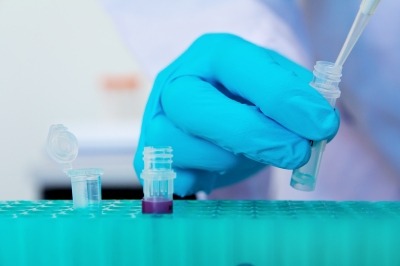Researchers at the US-based Georgetown University Medical Center claimed to have understood how a cancer drug functions in the brains of patients with Parkinson’s disease.

Image: Researchers claim that cancer drug increases dopamine levels in Parkinson’s patients. Photo: courtesy of ponsulak/FreeDigitalPhotos.net.
Subscribe to our email newsletter
The research team used a single low dose of Novartis’ leukemia drug Tasigna (nilotinib) in a phase II clinical trial in Parkinson’s disease patients. The researchers claimed that laboratory analysis from the first arm of the clinical trial showed how precisely the agent boosted dopamine levels in the brains of the enrolled patients.
Symptoms of Parkinson’s disease like motor dysfunction and others are caused by decline in the dopamine levels.
The investigators, who filed their findings in the Pharmacology Research & Perspectives journal, said that low dose of nilotinib brought down levels of a toxic protein that inhibits the brain from using dopamine stored in tiny vesicles in brain areas that may regulate movement.
Further, the team claimed that nilotinib seems to have the potential to stimulate the ability of immune cells within the brain to decrease the constant flow of the misshapen alpha-synuclein protein generated by damaged neurons. As a result, normal alpha-synuclein is allowed to facilitate release of the dopamine stored in the brain vesicles.
Georgetown University Medical Center translational neurotherapeutics program clinical research director and the study’s senior author Charbel Moussa said: “We detect the drug in the brain producing multiple effects, including improving dopamine metabolism — reducing both inflammation and toxic alpha-synuclein. This is unprecedented for any drug now used to treat Parkinson’s disease.”
The researchers examined cerebral spinal fluid (CSF) and plasma from the patients to assess Parkinson’s disease biomarkers, which was collected after administering a single dose of nilotinib or placebo.
Researchers studied levels of 3,4-Dihydroxyphenylacetic acid (DOPAC) and homovanillic acid (HVA) dopamine breakdown products in the CSF that bathe the brain and spinal cord of patients, after administration of nilotinib or placebo. The team also examined levels of TREM-2, which is a marker of the immune response to inflammation.
In the placebo arm, DOPAC and HVA were at low levels in the CSF compared to the nilotinib arm, indicating that the brain was using substantially more dopamine in the latter. The optimal dose of nilotinib for increasing the levels of DOPAC and HVA was determined to be 200 mg.
Moussa said: “When the drug is used, levels of these breakdown molecules quickly rise. This is what we also found in our preclinical studies and proof of concept clinical trial.
“This is exciting because this kind of potential treatment for Parkinson’s could increase use of a patient’s own dopamine instead of using or periodically increasing drugs that mimic dopamine.”
 Advertise With UsAdvertise on our extensive network of industry websites and newsletters.
Advertise With UsAdvertise on our extensive network of industry websites and newsletters.
 Get the PBR newsletterSign up to our free email to get all the latest PBR
news.
Get the PBR newsletterSign up to our free email to get all the latest PBR
news.

